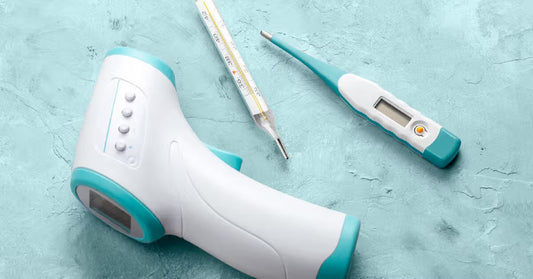
Tips for Maintaining and Extending the Lifespan of Your Wheelchair
Having a reliable wheelchair in Canada is crucial for individuals with mobility challenges. Wheelchairs provide independence and freedom of movement, allowing users to engage fully in daily activities. To ensure your wheelchair remains in optimal condition and lasts for an extended period, proper maintenance is essential. This article will provide valuable tips and guidelines on maintaining and extending the lifespan of your wheelchair, enabling you to make the most out of this invaluable mobility aid from United Canada.
1. Regular Cleaning and Inspection
The first step in wheelchair maintenance is regular cleaning. Dust, dirt, and debris can accumulate over time and affect the wheelchair’s performance. Wipe down the frame, wheels, and seating regularly with a damp cloth and mild detergent. Additionally, inspect the wheelchair for any loose screws, bolts, or damaged components. Addressing minor issues promptly can prevent them from escalating into more significant problems.
2. Lubricate Moving Parts
Proper lubrication of moving parts is crucial to keep your wheelchair running smoothly. Regularly apply a suitable lubricant to the wheel axles, casters, and other moving components. This will reduce friction, minimize wear and tear, and ensure the wheelchair remains easy to maneuver.
3. Check Tire Pressure
Wheelchair tires play a vital role in providing a comfortable ride. Check the tire pressure regularly and ensure they are inflated to the recommended levels. Properly inflated tires enhance stability, reduce the risk of punctures, and extend the life of the tires.
4. Store Properly
When not in use, store your wheelchair in a dry and clean environment. Avoid leaving it outdoors or in damp areas, as exposure to moisture can lead to rust and other damage. Use a wheelchair cover if possible to protect it from dust and debris.
5. Avoid Overloading
Wheelchairs have weight limits, and exceeding them can cause strain on the frame and wheels. Be mindful of the weight of belongings or accessories you carry while using the wheelchair. Distribute the weight evenly to prevent unnecessary stress on specific components.
6. Opt for Professional Maintenance
While regular maintenance at home is essential, seeking professional servicing from time to time is equally crucial. A trained technician can inspect the wheelchair thoroughly, identify hidden issues, and perform necessary repairs or adjustments that may not be possible to address on your own.
7. Mind Your Driving Habits
The way you handle your wheelchair can significantly impact its lifespan. Avoid abrupt stops and starts, as these can put strain on the wheels and frame. Slow down when navigating rough terrain to reduce the impact on the wheelchair’s components.
8. Replace Worn-out Parts
Over time, some wheelchair parts may wear out despite proper maintenance. When you notice signs of wear or experience decreased performance, consider replacing those components promptly. It’s better to invest in new parts than risk compromising your safety and comfort.
9. Battery Care (For Electric Wheelchairs)
If you have an electric wheelchair, taking care of the battery is crucial for its longevity. Follow the manufacturer’s guidelines on charging and storage to ensure optimal battery performance and lifespan.
10. Upholstery Maintenance
For wheelchairs with upholstered seating, regular cleaning and maintenance are essential. Follow the manufacturer’s instructions for cleaning and avoid using harsh chemicals that may damage the fabric or cushioning.
11. Wheelchair Pushing Technique
If someone else pushes your wheelchair, make sure they are familiar with proper pushing techniques. Incorrect pushing can cause unnecessary strain on the wheelchair and may lead to premature wear.
12. Avoid Harsh Chemicals
When it comes to cleaning your wheelchair, using the right cleaning agents is essential. Harsh chemicals, such as bleach or strong solvents, can cause irreversible damage to the wheelchair’s frame, upholstery, and other components. Instead, opt for gentle and non-corrosive cleaning agents that are specifically designed for wheelchair maintenance.
For cleaning the frame and other hard surfaces, a mild soap solution or a mixture of water and vinegar can work wonders. These natural cleaners effectively remove dirt and grime without causing any harm. When cleaning the upholstery or cushioning, use a fabric cleaner that is safe for the material used in your wheelchair. Always follow the manufacturer’s guidelines for cleaning to ensure you don’t accidentally void the warranty.
13. Check the Brakes
The brakes on your wheelchair are a crucial safety feature, allowing you to control your movement and come to a stop when needed. Regularly checking the brakes is essential to ensure they are functioning correctly and providing you with the necessary control. Start by inspecting the brake pads for any signs of wear. Worn-out brake pads can reduce the effectiveness of the brakes and compromise your safety. If you notice significant wear or damage to the brake pads, it’s time to replace them. Most wheelchairs have easily replaceable brake pads that you can find from the manufacturer or authorized dealers. Next, test the brakes by applying them while moving your wheelchair. The brakes should engage smoothly and bring your wheelchair to a stop without any sudden jolts or skidding. If you experience any issues, such as the brakes not engaging properly or making unusual sounds, it’s crucial to address them immediately.
14. Listen to Your Wheelchair
Pay attention to any unusual sounds or vibrations while using your wheelchair. These could be early indicators of a problem that requires attention.
Conclusion
Maintaining and extending the lifespan of your wheelchair is essential for ensuring its reliability and longevity. Regular cleaning, proper lubrication, tire maintenance, and responsible use are key factors in keeping your wheelchair in top-notch condition. Combining home maintenance with periodic professional servicing will help you make the most of your mobility aid for years to come.
FAQs
- How often should I clean my wheelchair?
It’s recommended to clean your wheelchair at least once a week or more frequently if it’s exposed to dirt or debris regularly.
- Can I use any lubricant for the wheelchair’s moving parts?
No, it’s best to use a lubricant recommended by the wheelchair manufacturer to ensure compatibility and effectiveness.
- What should I do if my wheelchair battery is not holding a charge?
If you’re experiencing issues with your electric wheelchair’s battery, consult the manufacturer’s guidelines or seek professional assistance.
- Is it necessary to have professional maintenance for manual wheelchairs?
While it’s not mandatory, periodic professional maintenance can identify potential issues early on and extend the wheelchair’s lifespan.
- Can I store my wheelchair outdoors?
It’s best to avoid leaving your wheelchair outdoors for extended periods, as exposure to the elements can damage it.







